Affiliate Disclosure: This page contains affiliate links. We earn from qualifying purchases.
For all the attention pocket autos are getting these days, the snubnose (snubbie) revolver is still considered, by many, “the” pocket pistol. While no hard numbers are available, I would wager that of all the makes and models of pocket guns, autos or revolvers, more snubbies have been sold over the years than any one type of semi-auto, simply because they’ve been available for so much longer. Revolvers have been proven technology for 150 years. If you’re under the age of fifty, you might not realize how recent an accomplishment completely reliable semi-auto pistols are. You can argue that snubbies are old-school and even outdated. Heck, it’s the 21st century. Polymer-framed subcompact semi-autos are all the rage. And yet, here in the 21st century, how many gun companies are making compact revolvers meant for self-defense? There are two good reasons for this—simplicity and ease of use, which are big selling points for seasoned gun owners and new shooters alike. Let’s take a look at some of the current offerings, plus a few things you know, including the advantages and disadvantages of snubbies as defensive weapons.
Smith & Wesson
Smith & Wesson didn’t invent the concept of a compact, short-barreled revolver purpose-built for personal defense, but they came to own it. The S&W J-frame has become synonymous with the term “snubbie.” Over the years, they have offered a gazillion different variations of the J-frame, and they currently have 38 different J-frames listed on their website. As a general rule, the traditional S&W snubbie is chambered in .38 Special, has a five-shot cylinder, a roughly two-inch barrel, and a rounded or otherwise compact grip suited to concealment. The quintessential S&W J-frame snubbie is the Model 36, known as the Chief’s Special, was introduced at the 1950 International Association of Chiefs of Police conference and named by a vote of the attendees. It was meant primarily for plainclothes and off-duty cops. A brief aside—I understand history and tradition, but a small part of me is surprised S&W hasn’t renamed this gun, considering how anti-gun an organization the IACP has become. Smith & Wesson sells a nearly identical version of this pistol today. It is chambered in .38 Special and capable of handling +P ammunition. It has a 1.88-inch barrel, blued finish, and walnut grips.
The grip is rounded and very slender—great for concealment, and to reduce snagging when drawing from concealment, but not so great for filling your hand, and keeping the gun from twisting while firing. There are better grip options available today—Craig Spegel’s Boot Grip revolutionized snubbie grips, and most of the hand-filling grips on the market today, that don’t otherwise impair concealability, are either copies of or derived from Spegel’s design.
Modern iterations of the Model 36 have Smith & Wesson’s Internal Lock Mechanism. Pre-lock S&W revolvers are highly prized, and so much so that S&W is now offering several models of J-frames with no internal lock (the 340, 442, 642, which are all hammerless designs). The Internal Lock Mechanism was added to S&W revolvers in about 2002, and you can see the hole for it on the left side of the frame above the cylinder release. Using a provided key, you can lock the gun so that pulling the trigger does nothing. In my opinion, they don’t make these revolvers any safer for the owner, they just protect Smith & Wesson from stupid lawsuits. And why wouldn’t you want one on your gun, besides the automatic American hatred of lawyers? Because more parts equals more opportunities for parts breakage. If you have a J-frame with an internal lock, there are several companies that offer lock delete kits, but be aware that removing it from your gun will void your warranty.
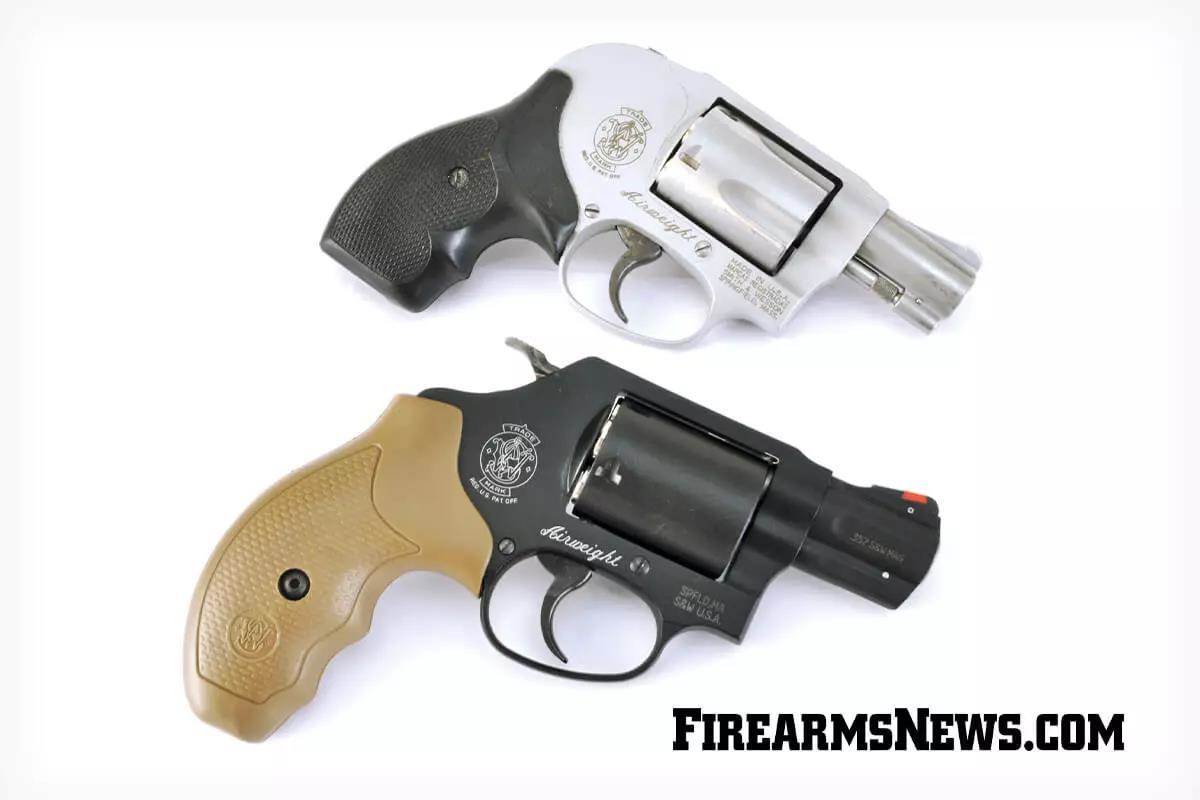
All other versions of the J-frame sprung from the Model 36. It has an exposed hammer. S&W sells snubbies with shrouded hammers (capable of being cocked but they won’t hook on a pocket during the draw) as well as double-action-only-hammerless revolvers. Like with any carry gun, don’t just practice shooting it, but practice drawing it from whatever location/manner you’re carrying it. Many of their J-frames are offered in stainless steel, a far better choice for carry guns. You’ll be able to find S&W J-frames chambered in .22 LR, .22 WMR, .38 Special, and .357 Magnum, and .327 Federal Magnum. There have even been versions offered in .327 Federal Magnum and 9mm. Barrel lengths range from the traditional 17⁄8 to three inches, although I don’t consider a three-inch barrel a snubbie. S&W offers them in all-steel models, or “Airweight” models which have frames made of aluminum or even scandium, a strong alloy even lighter than aluminum. Airweight guns are easier to carry, but more punishing to shoot. And a quick note about that. Personally, I find even shooting .38 Special +Ps a bit punishing in all-steel snubbies, and abusive in Airweights, as they are deliberately built to be small and light, for ease of carry. Just a reminder, small and light means easy to carry, but hard to shoot. As these guns are built to be carried a lot, and shot a little, stiff recoil isn’t an issue for many people, but you should still practice with it, so you can be guaranteed to hit what you’re aiming at.
S&W and other companies make snubbies chambered in .357 Magnum, but that seems like masochism to me. Modern defensive ammunition is loaded with bullets that do a great job of expanding at standard velocities, which is why, in the past, I’ve carried a snubbie loaded with Hornady’s Critical Defense Lite ammunition, which is very soft and controllable, and the bullets expand at that reduced velocity. Hits are better than misses, and when using ammunition with less blast and recoil, you are far more likely to get multiple hits on bad guys—and that’s generally what drops bad guys when using a pistol, hitting them in the right place, multiple times. A quick note: if you own a S&W snubbie and have no idea which model it is, or come across one at a gun show and are wondering which model it is, open the cylinder and look inside the frame on the left side, just underneath the barrel. The exact model number will be etched there. Prices start at $539 and go way up from there, especially if you’re looking at the semi-custom Performance Center models.
Ruger

Ruger currently offers two lines of revolvers which have models that count as snubbies, the LCR and the SP101. The SP101 is a very traditional revolver with an all-stainless steel construction. It is available in .38 Special+P, .357 Magnum, and 9mm. Available barrel lengths suitable for the “snubbie” title are 2.25 inches, although three-inch and longer barrels are offered. At least one model has a bobbed hammer. The grips are all one piece and have rubber inserts to help tame recoil. Due to their all-stainless construction, they are not light—26 ounces is the lightest you’ll see, although that weight does help tame recoil. But even the smallest, lightest SP101s are not pocket guns, and stretch the “snubbie” moniker, although they are bank vault tough. Prices start at $919.
The Ruger LCR was announced in 2009 and even back then a lot of people were scratching their heads at a gun company introducing a new wheelgun in an era that seemed to be owned by the small semi-auto. Heck, just the year before Ruger introduced the now legendary LCP, which single-handedly caused the .380 ACP ammo shortage (seriously). The LCR—which stands for Lightweight Compact Revolver—wasn’t just a cut-down version of one of Ruger’s existing all-steel wheelguns, it was a radical departure in revolver design. It featured a frame that was part aluminum, part polymer in construction, which sounded so crazy it got the gun more attention than it otherwise might have—mostly because a lot of people were convinced “plastic” wasn’t strong enough to function as a revolver frame.
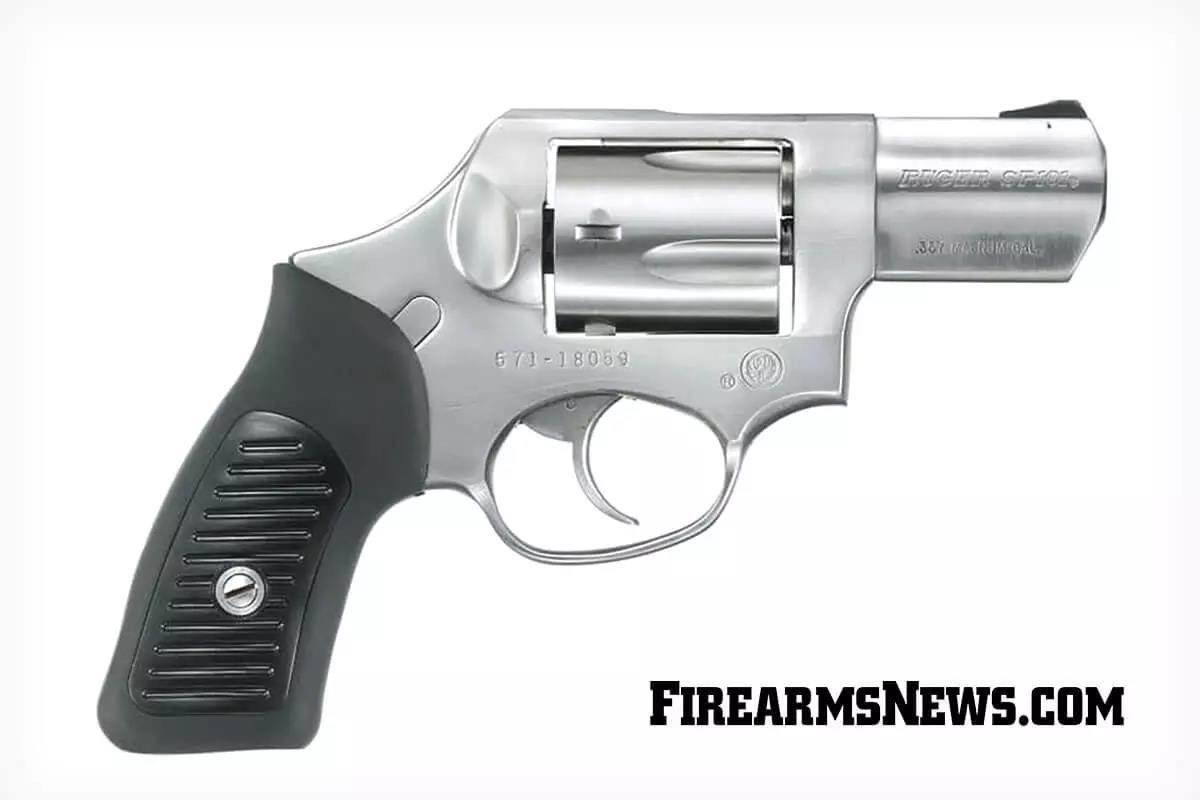
Currently, Ruger offers two versions of the LCR, the original, with its hammerless design, and the LCRx, which has an external spur hammer. The LCR is offered in .22 LR, .38 Special+P, .357 Magnum, and .327 Federal Magnum. FYI: one advantage of the .327 Fed is capacity—you can fit six rounds into a cylinder that only holds five .38/.357s. The LCRx is offered in .22 LR, .22 WMR, .327 Federal Magnum, .38 Special+P, .357 Magnum, and 9mm Luger. Prices start at $739. Apart from the hammer, the two models of the LCR are identical, and both are offered in several different finishes and barrel lengths. They all sport stainless steel cylinders with a PVD finish for corrosion resistance. The original model LCR, Ruger’s modern “snubbie,” was chambered in .38 Special+P and featured a 1.87-inch stainless steel barrel. That barrel is screwed into a one-piece monolithic barrel shroud/frame made of “aerospace aluminum.” The front sight is steel and pinned into place on the barrel shroud, so it is replaceable. The front sight is a serrated ramp with a white outline. The rear sight is a notch machined into the rear of the aluminum frame.
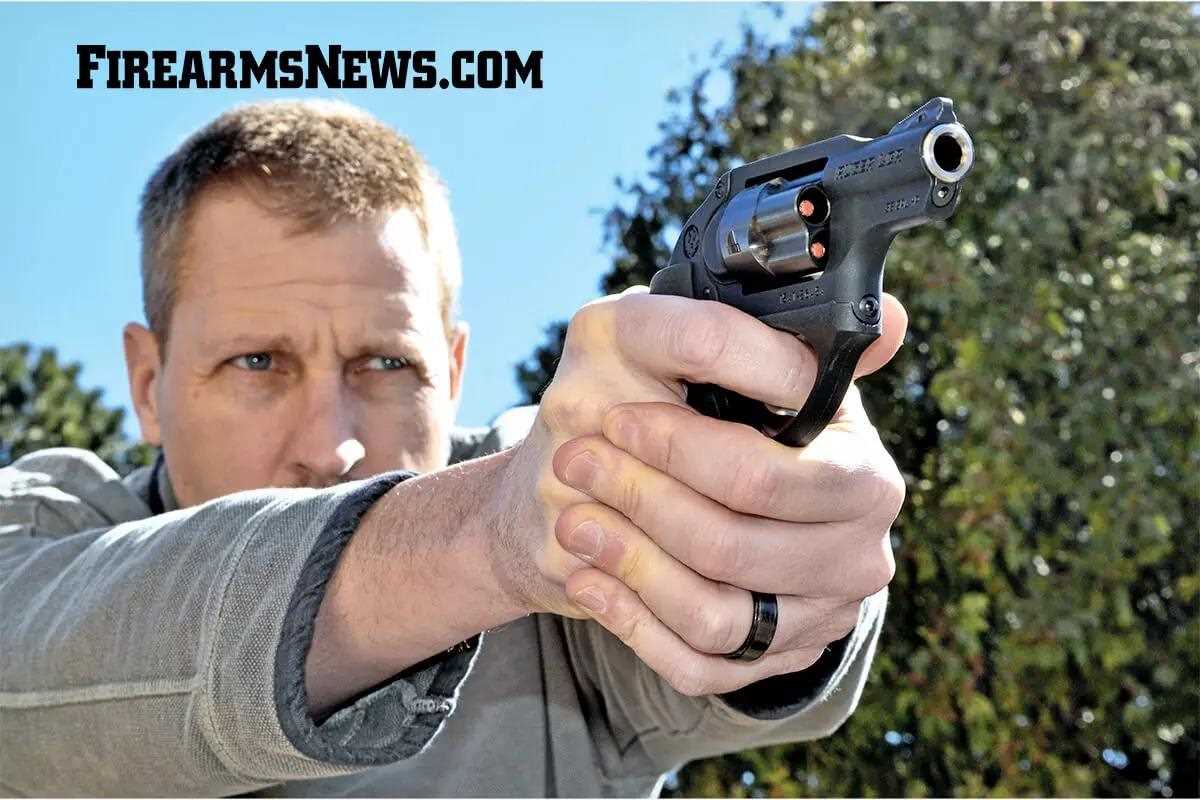
The aluminum section of the frame encloses the cylinder on all sides. The polymer section of the frame includes the trigger guard, grip frame, and encompasses all of the fire control parts. What got Ruger all the initial attention with the LCR was the polymer frame. What got them all the sales were two things—how comfortable this light revolver was to shoot, and what a great trigger it had. Let’s talk about the grip, first. At a mere 13.5 ounces, the LCR is light—that L in LCR deserves to be there. But this revolver is surprisingly comfortable to shoot, and that is due simply to the grip Ruger choose to put on this piece, a Hogue Tamer.
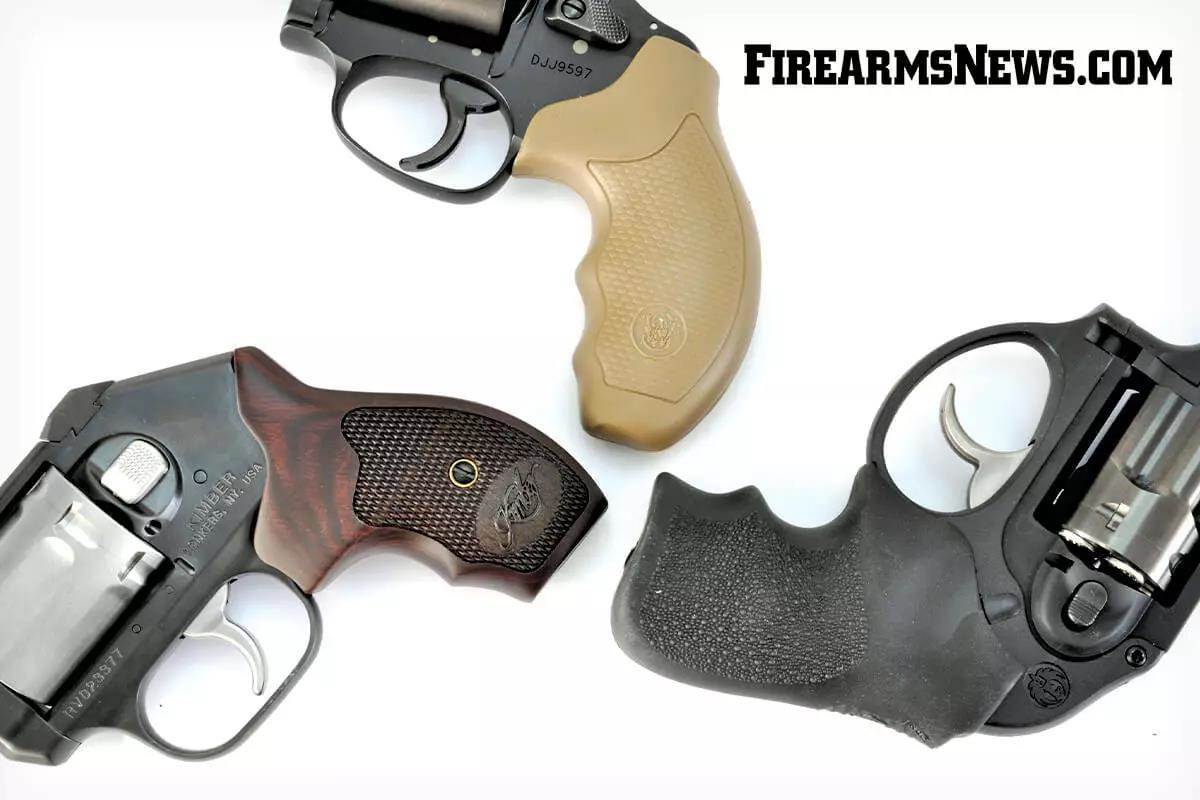
This is a black rubber one-piece grip secured to the grip frame via one screw on the bottom (which makes it easy to switch out if you so desire). This grip has two finger grooves for control and puts some nice soft recoil-absorbing material between the web of your hand and the hard frame of the weapon. The factory Hogue Tamer grip works great for taming the recoil of this light revolver. But that grip is not as small as you might think. It is not long but it is wide, and the rubber used for it is a bit tacky, so it does not conceal—or draw from concealment—as well as you might expect from a snubbie. Especially out of a pocket, that rubber tends to grip fabric as well as it does your hand. However, Ruger gambled that the comfort and increased shootability this grip provides more than outweighs its compromised compactness, and I can’t say they’re wrong. Now let’s talk about the trigger on the LCR. Simply put, the trigger pulls are uniformly smooth and light. They are consistently the best trigger pulls of any factory production snubbie revolvers on the market…or at least they were, until Kimber introduced the K6s.
Recommended
Kimber
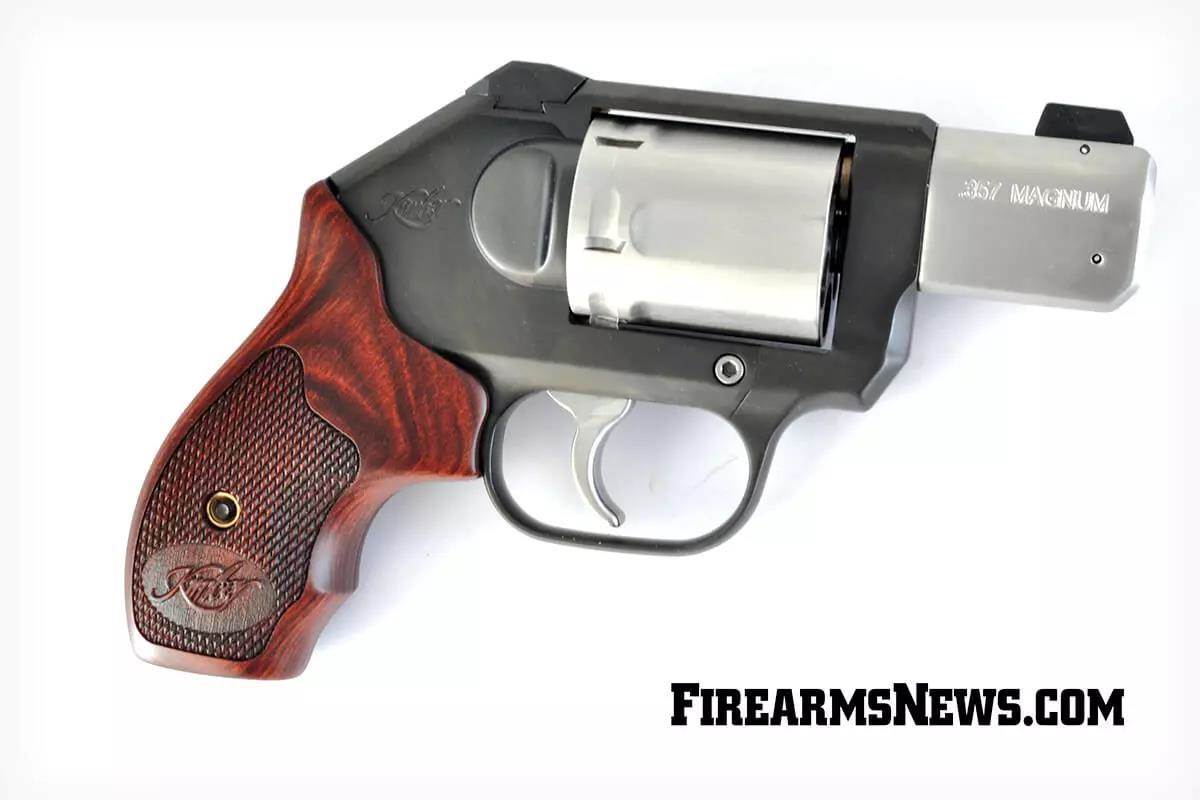
When Kimber dove into the revolver market roughly seven years ago with their K6s, they got a lot of attention. First, they weren’t a revolver company—they made 1911s, and well-regarded rifles. Second…revolvers? Compact and subcompact 9mms were, and still are, the dominating force in the concealed carry market, and jumping into wheelguns seemed a strange business decision. And then, finally, were the guns themselves—Kimber didn’t dip its toe into the market with a bargain-priced, entry-level gun, they jumped into the deep end with a high-end, beautiful, stainless steel revolver priced higher than most of its competition. And the K6s has been a huge success. While Kimber offers a number of different variations of the K6s (including special editions), the guns can be separated into two main models, the K6s Stainless, which has an internal hammer and is double action only (DAO), and the K6s DASA, which has an exposed hammer and can be fired both double action and single action.
No matter the barrel or grip length, or color finish on the gun, all K6s revolvers share the same bones—they are all six-shot .357 Magnum-chambered stainless-steel revolvers. And they’re all beautiful. Because of their size and weight, only the two-inch-barreled versions, in my opinion, come close to earning the “snubbie” moniker, and even then, they’re too big and heavy for a pocket. In two-inch models, Kimber currently offers the standard DAO K6s, the DASA, and the DCR, the Deluxe Carry Revolver. The DCR is basically a custom DAO K6s at a slightly elevated price, sporting a great trigger, a satin finish, and rosewood grips. The K6s Stainless is the least expensive model at $984, but I would argue you get what you pay for—all stainless-steel construction, and this is a six-shot .357 Magnum, which means it will handle .38 Special and .38 Special +P loads with ease. It is 6.62 inches long, 1.39 inches wide, 4.46 inches tall, and weighs 23 ounces empty—which means it’s at the far outer limits of size/weight for what I’d consider a viable “pocket gun,” although of course that depends on the size of you and your pockets. However, in any kind of holster this snubbie disappears under a covering garment.
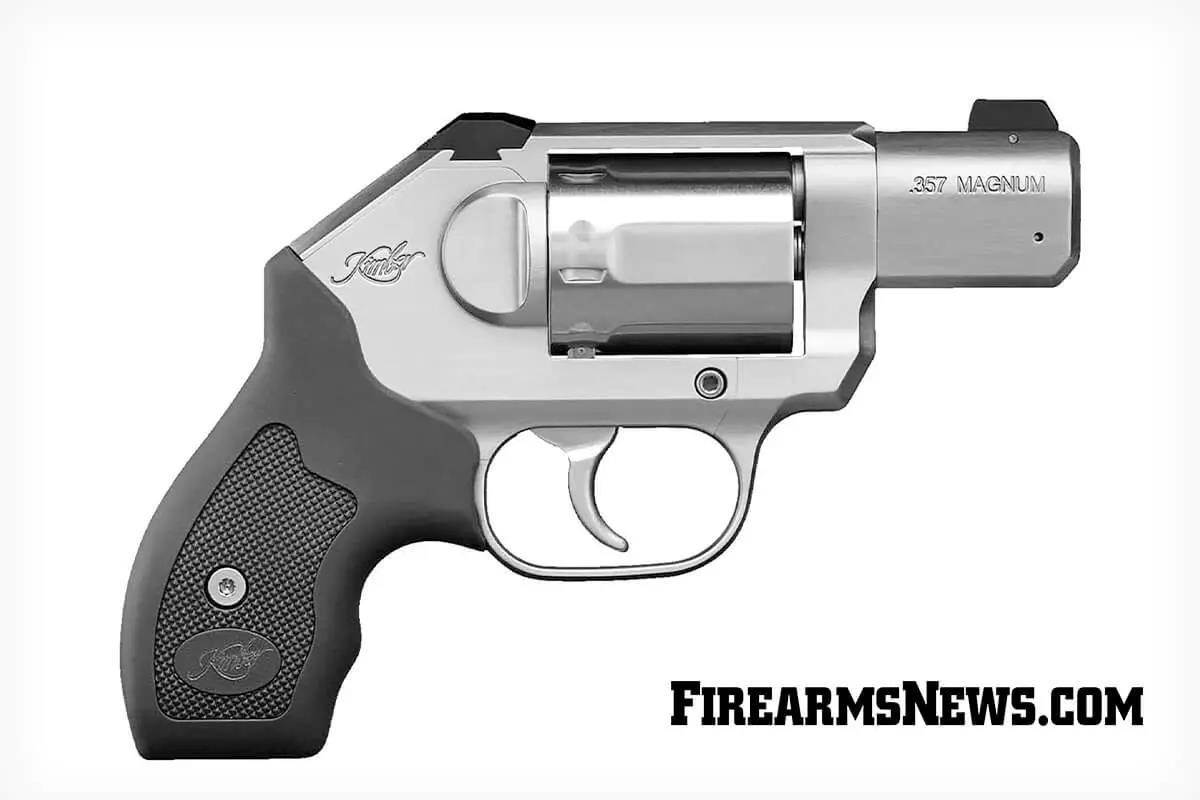
The barrel has a full-length underlug protecting the ejection rod, and it and the rest of the gun has a matte brushed stainless finish that both looks good and will stand up to wear. Atop the pistol you will see sights designed for concealed carry. The front sight is a steel post with a white dot. The rear sight is fixed, dovetailed into the frame, with radiused corners to keep it from snagging. The rear sight has a generous notch, with white dots to either side of the notch. Both the front and rear sight have a black finish, easier for your eyes to see in contrast to the frame/barrel. The cylinder has flats milled into it that both look great and reduce the weight a bit. Kimber advertises it as having the smallest cylinder capable of handling the .357 Magnum, and I don’t doubt that. The cylinder release is a sizeable rectangular pushbutton with aggressive checkering. Everything about this revolver is smooth—the cylinder release, the ease with which the cylinder swings out of the frame and back in, and the trigger pull. Kimber says the K6s has a “non-stacking” trigger pull, meaning the weight doesn’t increase the farther back the trigger gets. I don’t feel that’s quite accurate—but I also don’t feel that’s a negative.
I’ve shot a lot of K6s’ over the years. They have uniformly smooth and light double-action trigger pulls. Kimber advertises DA trigger pulls between 9.5 to 11.5 pounds, and most of the ones I’ve tested have been on the lower end of that range. But on all of the trigger pulls, there is a pause, a soft spot in the pull, right after the cylinder finishes spinning and locks into place, but before the hammer drops. If you’re pulling the trigger fast you won’t even notice this. But if you’re deliberate, you can catch this pause each time—and it allows you to complete the trigger pull almost as if you’re firing the pistol single action.
Taurus
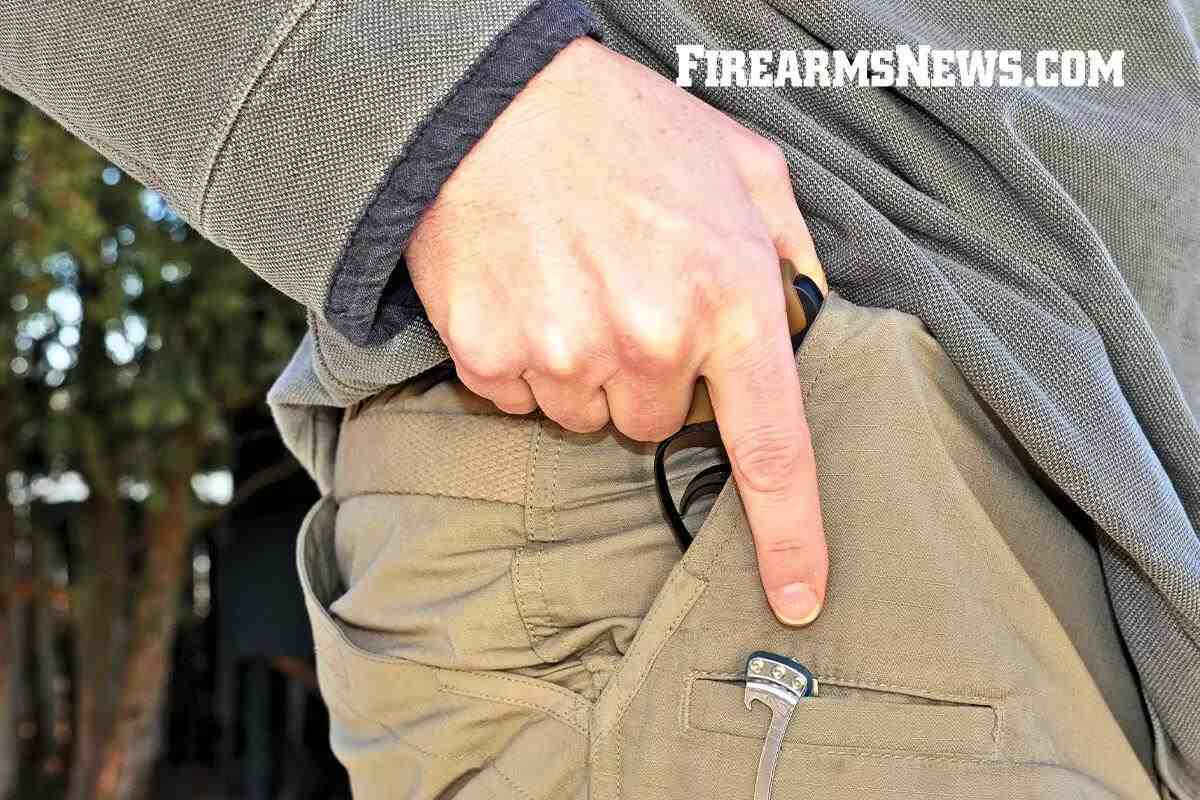
Taurus currently has six lines of small revolvers. Not six models, six lines—the 327 (a DA/SA chambered in .327 Federal Magnum), the 380 (a bobbed-hammer five-shot .380 ACP), the 605 (a five-shot .357 Magnum), the 856 (a six-shot .38 Special), the 905 (a five-shot 9mm), and the 942, an eight-shot revolver available in either .22 LR or .22 WMR. Just as Smith & Wesson became well-known for their Model 36 Chief’s Special, Taurus’ model that got them attention on the snubbie front was their now-discontinued Model 85. This was a five-shot .38 Special+P snubbie that has since been replaced by the six-shot 856.
The trigger pulls on Taurus revolvers used to be very old-school, and by that, I mean they were heavy and gritty, but the trigger pulls on the Taurus wheelguns I’ve tested over the past few years have been very much improved. Which is great, considering they are built and designed to be very affordable. The basic black Taurus Model 856 with its two-inch barrel has an MSRP of just $379.99. Currently, I have a stainless-steel Model 856 with a two-inch barrel on hand, MSRP $399.99. Its double action trigger pull is 11.5 pounds and relatively smooth, with no stacking, and its single-action pull is five pounds and crisp. For a gun with a street price of under $350, that’s excellent. Recently, Taurus has introduced their Executive Grade of revolvers, which feature improved grips, finishes, and in-house trigger jobs. So far, they’ve only offered the EG package on larger wheelguns (their Executive Grade 856 has a three-inch barrel and big target stocks), but I’d be shocked if they didn’t soon offer it on a snubbie.
Colt
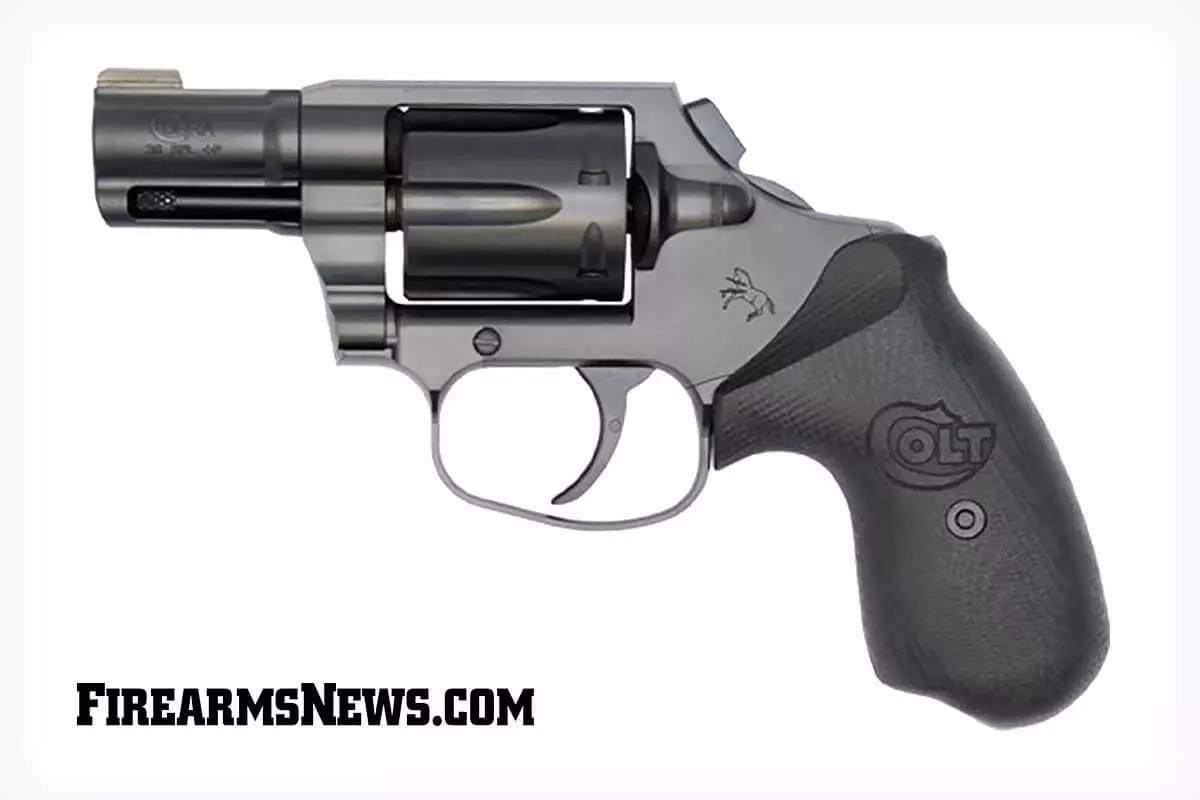
Perhaps as well known as Smith & Wesson’s “Chief’s Special” is Colt’s Detective Special. This was a six-shot .38 with a two-inch barrel, and was in production from 1927 to 1996. Colt currently doesn’t make it…however they are currently making seven different versions of the Cobra/King Cobra which fall under the “snubbie” umbrella. Colt offers two versions of the stainless steel .357 Magnum King Cobra with two-inch barrels—one with an exposed hammer, and one with a bobbed hammer for DAO operation. These are both $899 and have oversize rubber grips which work great for shooting, but not so great for concealment.
Colt’s Cobra is a six-shot .38 Special+P revolver, offered in six different models. All of the wheelguns have two-inch barrels, but the finishes, grips, and sights differ. I think the best-looking one is the Night Cobra, which sports a bobbed hammer, smooth G10 grips, and a matte black Ion Bond finish over stainless steel. Prices start at $699 and go up from there—the Night Cobra is $899. Colt has relaunched several of their revolver lines in the past few years, and the new guns all offer improved trigger pulls due to a redesigned linear leaf mainspring. And remember—the more you shoot a revolver, the smoother the trigger pull will get. Which is an incentive to practice.
Final Thoughts
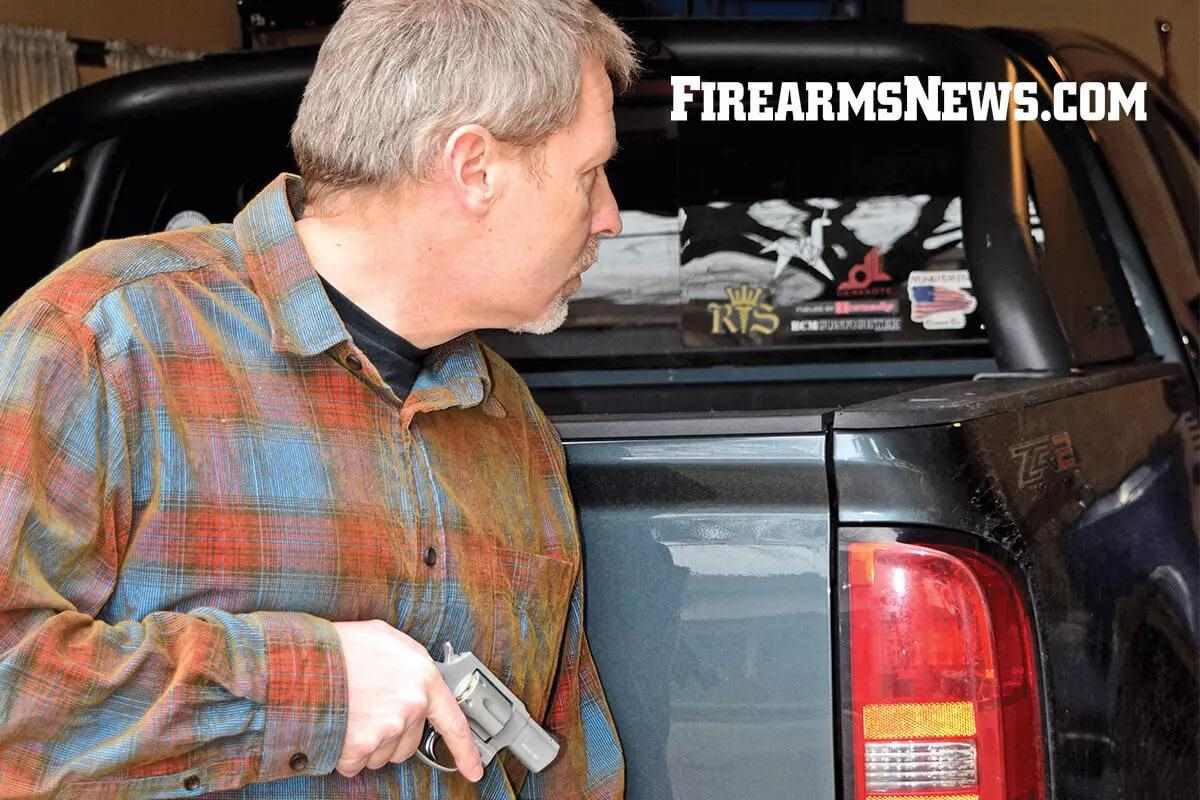
This is far from a comprehensive list; it’s just meant to give you a general idea of what’s out there, and to reinforce the fact that snubbies are still around and going strong. I can think of at least two companies I haven’t even listed (Rossi and Charter Arms) who are making snubnose revolvers, and there are undoubtedly more. Also, companies seem to randomly start and stop offering various models, and you may find models for sale (new) that aren’t even currently listed on the website, so there’s even more out there than I’ve mentioned.
Revolvers are hard to shoot fast and accurately. They have limited capacity, and are slow to reload. But, for all that, they remain popular. They are as reliable as reliable gets. They are easy to carry, and simple to operate—when you want to fire, just point and shoot. Malfunction drill? Just pull the trigger again. They are basic, but sometimes basic is all you want, or need. No…maybe basic isn’t the right word. Classic. Snubbies are classic. And who doesn’t love the classics?
About the Author
James Tarr is a longtime contributor to Firearms News and other firearms publications. A former police officer he is a USPSA Production Division Grand Master. He is also the author of several books, including CARNIVORE, which was featured on The O’Reilly Factor. His current best-selling novel, Dogsoldiers, is available now through Amazon.
If you have any thoughts or comments on this article, we’d love to hear them. Email us at [email protected].
Read the full article here


